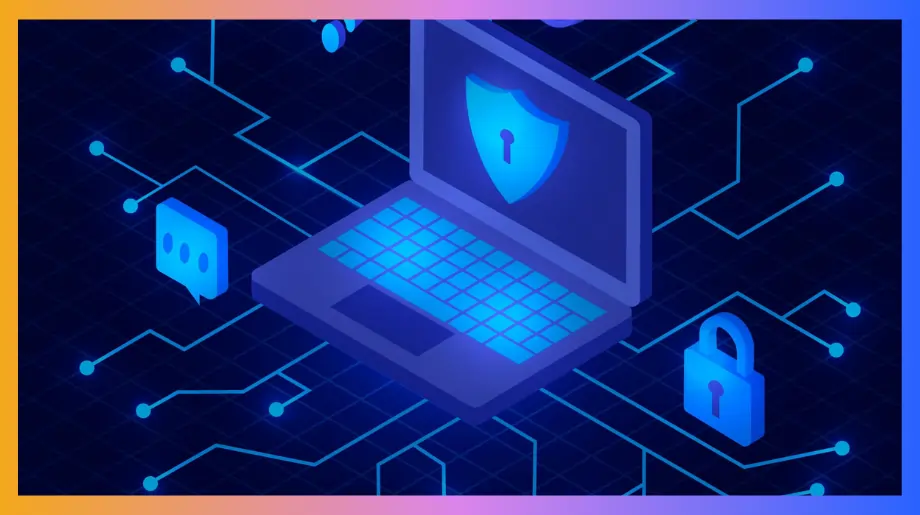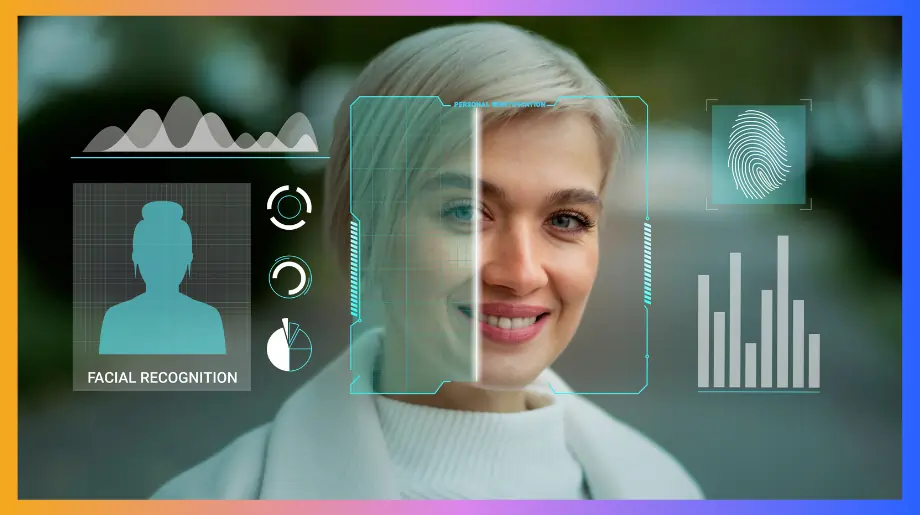Microservices split your big applications into small independent services. Each service handles specific business functions. Services communicate through APIs. About 85% of companies use microservices now.
Security threats target your distributed services today. Hackers attack every single service endpoint. They exploit API vulnerabilities and service communications. Each service creates new attack points for them. Data breaches cost you $4.35 million on average.
Microservices authentication checks who gets into your system. You need this protection immediately. Use OAuth, JWT tokens, or Microsoft authentication providers. This stops hackers from breaking your services.
What is Microservices Authentication?
Microservices authentication controls access to your business systems. Your enterprise runs multiple independent services now. Each service handles critical business functions like payments or customer data. Before services can communicate, they must verify their identity.
This creates secure channels for data exchange.
Without proper authentication, hackers can impersonate legitimate services. They steal sensitive information or disrupt operations. Authentication acts as your first line of defense. It ensures only authorized services access your valuable business assets.
Here are the key parts you need to know:
- User authentication: Your customers log into your application first. You verify their username and password. Once confirmed, you give them secure access tokens.
- Service-to-service authentication: Your microservices communicate with each other constantly. Each service proves its identity to others. They use JWT tokens or API keys for verification.
- Third-party access: Third-party systems want to access your APIs. You authenticate their credentials at the entry point. API keys control their access permissions.
- Layered security: Authentication creates multiple security barriers around your data. Each barrier blocks different attack methods. If attackers breach one layer, other layers protect you.
- Automated identity management: These security controls work together as one system. They monitor every access point in your architecture. This layered approach prevents complete system compromise.
Your authentication system uses many security layers. Your API gateway checks OAuth 2.0 tokens at entry points. Each service checks JWT tokens with shared keys. When tokens fail, backup systems start working. This process checks every service connection.
Your system handles service login tasks for you. Each service gets its own ID and security certificates. Services talk through encrypted channels. This setup protects your whole business network.
Why Authentication Important in Microservices Architecture
The distributed nature of microservices creates unique security challenges that make authentication critical. You scatter your services across many different places now. Each service uses its own database and different tools.
This setup opens many doors that hackers can try. You need strong authentication to lock down every entry point. Without it, your entire system becomes vulnerable to attacks.
Here are the main reasons why you cannot skip authentication in your microservices:
- Service Impersonation Prevention: Hackers often pretend to be your real services. They copy service identities to fool your system. Once inside, they steal data or break your operations. Strong authentication stops these fake services at the door.
- Data Breach Mitigation: One broken service can expose your whole system. Each microservice creates new ways for hackers to attack. Authentication builds walls between your services. If one service falls, others stay protected.
- Regulatory Compliance: About 80% of companies worry about data privacy now. Laws require you to protect customer information properly. Authentication helps you meet these legal requirements. You can prove who accessed what data.
- Operational Trust: Your services need to trust each other completely. Authentication creates this trust between all services. This lets your system run smoothly without security fears. You can grow your services without breaking security.
Monolithic Authentication vs Microservices Authentication
Monolithic authentication uses one login system for your whole app. Users log in once and access everything. All app parts trust this single system.
Microservices authentication works differently. Each service checks user identity separately. Services use tokens instead of shared sessions. Each service controls its own access rules.
Moving from monolithic to microservices changes how you handle security. You need to understand both approaches. This helps you plan better authentication systems. You can make smart security choices for your business.
Here's how these two authentication approaches compare in real-world scenarios:
Common Microservices Authentication Approaches
Security leaders can choose from several proven approaches to implement microservices authentication and authorization. Each approach has distinct advantages and use cases.
1. Edge-Level Authentication and Authorization
Authorization happens at the edge using an API Gateway. This approach puts authentication at the network edge. It gives you one single point to control security policies.
API gateways create a central layer to enforce security policies. This includes authentication, authorization, rate limiting, and logging of requests. The gateway checks all incoming requests first. It sends verified requests to backend services with identity and access management information.
Who Can Use This Approach:
- Large enterprises with centralized IT teams
- Organizations with many microservices needing uniform security
- Companies wanting simple security management
Benefits:
- Simple security management through one central place
- Less work for individual services to handle
- Same security policy rules for all services
- Better monitoring and logging tools
Drawbacks:
- Less secure if an attacker gets past the gateway
- They can reach any microservice without more checks
- An API Gateway breaks defense in depth principle
2. Service-Level Authentication
This approach puts authentication logic inside each microservice. It gives you fine control but makes things more complex.
Each service keeps its own authentication tools. Services check identities without help from others. This approach gives you maximum freedom for teams. It needs the same setup across all services though.
Who Can Use This Approach:
- Small teams with different technology stacks
- Organizations with independent development teams
- Companies needing custom authentication per service
Benefits:
- Maximum control over authentication for each service
- Teams can choose their own authentication methods
- No single point of failure risks
Drawbacks:
- Each microservice must handle authentication and authorization logic alone
- You could use same code but need specific language support
- Use shared authentication libraries and standard protocols to keep things the same
3. External Identity Propagation
You must get information about the end user first. Then send it to other microservices for checking. This strategy balances central control with spread out enforcement.
You take an Access Token from the edge. Then send it to individual microservices for processing. Services get pre-checked tokens containing user identity and permissions.
Who Can Use This Approach:
- Companies with mixed security requirements
- Organizations transitioning from monolithic to microservices
- Enterprises needing detailed access control
Benefits:
- This strategy gives you the most detailed control over microservice authentication
- Balances central management with distributed enforcement
- Good for complex permission requirements
Drawbacks:
- Not secure because token content gets shared with all microservices
- Because of this, attackers can break the shared token
- More complex to implement than other approaches
How Does Microservice Authentication Work?
Your microservice authentication runs like a business process. Each step checks security before moving forward. This protects your company data and operations. The system works fast so your business never slows down.
Here are the main steps that make microservice authentication work:
- Step 1: Initial Token Request
Your company's authentication system works like a security checkpoint. Employees or systems request access by providing login credentials. The system verifies these credentials against your company database. Once verified, it creates a secure digital token with user permissions. This token proves the user's identity to all your business systems.
- Step 2: Token Validation at Each Service
Each system checks tokens independently without calling back to central security. Systems use built-in verification to confirm token authenticity. This keeps your operations running fast and efficiently. Your systems stay online even if the main authentication system has issues.
- Step 3: Key Rotation and Management
Your security system updates encryption keys every 90 days automatically. This happens immediately if security threats are detected. The main system creates new security keys for tokens. All systems receive updated keys to verify access. This process protects your data without disrupting operations.
Microservices Authentication Techniques and Protocols
Modern service to service authentication in microservices relies on several proven techniques and protocols. Each technique addresses specific security requirements and challenges. You need to understand these methods to build secure systems. This knowledge helps you choose the right approach for your needs.
Here are the key microservices authentication methods you need to understand:
JWT Tokens for Fast Authentication
- JWTs pack user credentials in compact format. Services check them without asking databases for help. This reduces system load and makes authentication faster.
- Your services can verify users instantly without delays. No extra database calls slow down your system. JWTs work across all your microservices seamlessly.
OAuth 2.0 for Third-Party Access
- OAuth 2.0 lets third-party services access user resources safely. It gives standard flows for different authentication scenarios across applications. Companies use this for secure access control.
- Your users can log in through Google or Facebook accounts. You control what data external services can access. It creates secure pathways for external systems.
- OAuth separates user login from resource access permissions. This means users never share passwords with third-party apps. Your system stays secure while enabling integrations.
Mutual TLS for Two-Way Security
- Both client and server must prove identities before connecting. This technique ensures two-way authentication for secure service communication. Each side verifies the other first.
- Your services confirm they talk to real services only. This stops hackers from pretending to be your services. Both sides exchange certificates to prove identity.
API Keys for High-Volume Access
- These lightweight credentials authenticate systems at scale without extra queries. They work well for high-volume service interactions and requests. Authentication happens fast with these methods.
- Your services handle thousands of requests per second. API keys contain access permissions and user identity. Systems verify keys locally without database lookups.
OIDC and OAuth Working Together
- OIDC works with OAuth 2.0 to handle complete identity management. OAuth handles authorization while OIDC manages user authentication protocols. They work together for full security.
- OIDC tells you who the user is exactly. OAuth tells you what they can access in your system. This combination gives you complete user control.
- This dual approach separates identity verification from permission management. You get detailed user profiles plus granular access control. Both protocols complement each other perfectly.
Key Challenges in Microservices Authentication
Security leaders must navigate several complex challenges when implementing authentication in microservices environments.
Security leaders must navigate several complex challenges when implementing microservices authentication in distributed environments.
Here are the main authentication challenges you will face:
Token Management Complexity
- Managing tokens becomes complex across many different services. You must create, send, check, and cancel tokens safely. Each step needs careful planning to prevent security holes.
- Token lifecycle management requires coordinated policies across all services. You need centralized token stores and rotation schedules. Expired tokens must be cleaned up automatically to prevent memory issues.
Performance and Scalability Issues
- Your authentication system becomes slow as you add services. More users make the problem worse for performance. You need systems that grow with your business needs.
- Authentication bottlenecks occur when all services depend on central verification. Distributed caching helps reduce authentication server load significantly. Load balancing spreads authentication requests across multiple servers.
Single Point of Failure Risks
- One broken authentication service can stop your whole system. All security checks go through this single point. You must build backup systems to prevent total failure.
- High availability requires multiple authentication servers running simultaneously. Failover mechanisms automatically switch to backup servers during outages. Health checks monitor authentication service status continuously.
Application Performance Impact
- Authentication checks slow down your application response times. Every request must wait for security verification first. You need fast authentication that still keeps hackers out.
- Caching verified tokens reduces repeated authentication calls significantly. Asynchronous verification processes prevent blocking user requests. Local token validation eliminates network calls entirely.
Legacy System Integration Challenges
- Old systems use different authentication methods than new ones. These systems cannot talk to modern microservices easily. You need bridges to connect old and new systems.
- Protocol adapters translate between old and new authentication methods. API gateways provide unified authentication interfaces for mixed environments. Migration strategies help transition legacy systems gradually to modern authentication.
5+ Microservices Authentication Best Practices
Implementing effective microservices authentication best practices requires a comprehensive approach addressing multiple security dimensions.
Here are the essential security practices you must follow:
Implement Least Privilege Access Control
- Give each service only the access it needs. Check what permissions your services have right now. Remove any extra access that services do not use.
- Regular access audits help identify permission creep over time. Automated tools can scan and report excessive privileges across services. Document all permission changes for compliance and security tracking.
Leverage Proven Identity Providers
- Use proven identity providers like Auth0 or Okta. These tools handle authentication for all your services. You get strong security without building everything yourself.
- Cloud identity providers offer built-in compliance with security standards. They provide single sign-on capabilities and multi-factor authentication. Regular security updates happen automatically without your team's involvement.
Secure Service-to-Service Communication
- Encrypt all data that moves between your services. Use TLS 1.3 for secure communication channels. Keep your certificates updated and rotate them when needed.
- Certificate management platforms automate renewal and distribution processes. Mutual TLS provides two-way authentication between all service connections. Network policies can enforce encrypted communication requirements automatically.
Implement Strong Token Security
- Use strong encryption methods to sign your tokens. Make tokens expire quickly and refresh them often. Change your signing keys on a schedule.
- Short-lived tokens reduce the impact of token theft. Automatic key rotation prevents long-term key compromise risks. Token blacklisting capabilities help revoke compromised tokens immediately.
Establish Comprehensive Monitoring and Logging
- Track every login attempt and security event. Set up alerts for suspicious behavior patterns. Keep detailed logs for security audits and compliance.
- Centralized logging aggregates security events from all microservices. Machine learning algorithms can detect anomalous authentication patterns. Log retention policies ensure compliance with regulatory requirements.
Deploy Defense-in-Depth Security
- Build multiple layers of security around your services. Use network security, container security, and runtime protection together. If one layer fails, others protect you.
- Network segmentation isolates compromised services from spreading attacks. Container scanning prevents vulnerable images from reaching production. Runtime monitoring detects and blocks malicious behavior in real-time.
Strengthen Microservices Authentication with Modern Solutions
The evolution of microservice auth continues with emerging technologies and platforms designed to address contemporary security challenges.
Here are modern solutions that can strengthen your microservices authentication:
- Modern cloud platforms give you built-in identity management tools. These solutions scale automatically and meet compliance requirements. They work seamlessly with container orchestration platforms. SSO integration makes authentication even more streamlined.
- Service meshes like Istio provide automatic mTLS between services. They give you fine-grained access control and traffic monitoring. These platforms hide security complexity while protecting everything.
- Treat your private network like the public internet security-wise. Zero trust principles check every service interaction continuously. This approach assumes no service can be trusted automatically.
- Machine learning algorithms detect strange access patterns in real-time. These systems spot threats before they cause damage. They respond to attacks automatically without human help.
- Container security includes trusted images and vulnerability scanning. You implement least privilege access for all users. Secret management keeps sensitive data protected at all times.
The future of microservices authorization lies in intelligent systems that adapt to new threats. Security leaders who invest in modern authentication today build stronger organizations. These strategies protect data while supporting business growth.
FAQs
How do microservices authenticate?
Microservices authentication follows simple steps to check who users are.
Here are the main steps that make microservice authentication work:
- Users give login details to your security service for checking
- The service checks login details and makes JWT tokens with user rights
- Users get tokens for using microservices in future requests
- Each microservice checks if tokens are real using shared secret keys
- Services say yes or no to access based on token checking
- Old tokens get new ones automatically to keep access working
- API gateways can handle first login steps in one place
- Pick OAuth for outside company connections and JWT for inside services
Why is basic authentication not suitable in the microservices context?
Basic authentication sends your username and password with every request you make. This creates big security problems when you have many services talking to each other.
JWT tokens give you strong security without sending passwords over and over. These tokens let you control who can access what across all your services. This way keeps your system much safer and works better too.
What is the authentication process in microservices?
Users submit credentials to an authentication service or gateway first. The service checks credentials and creates signed tokens with permissions. Tokens get returned to clients for use in future requests. Each microservice validates tokens using shared public keys independently. Services check token claims before allowing access to resources.





















